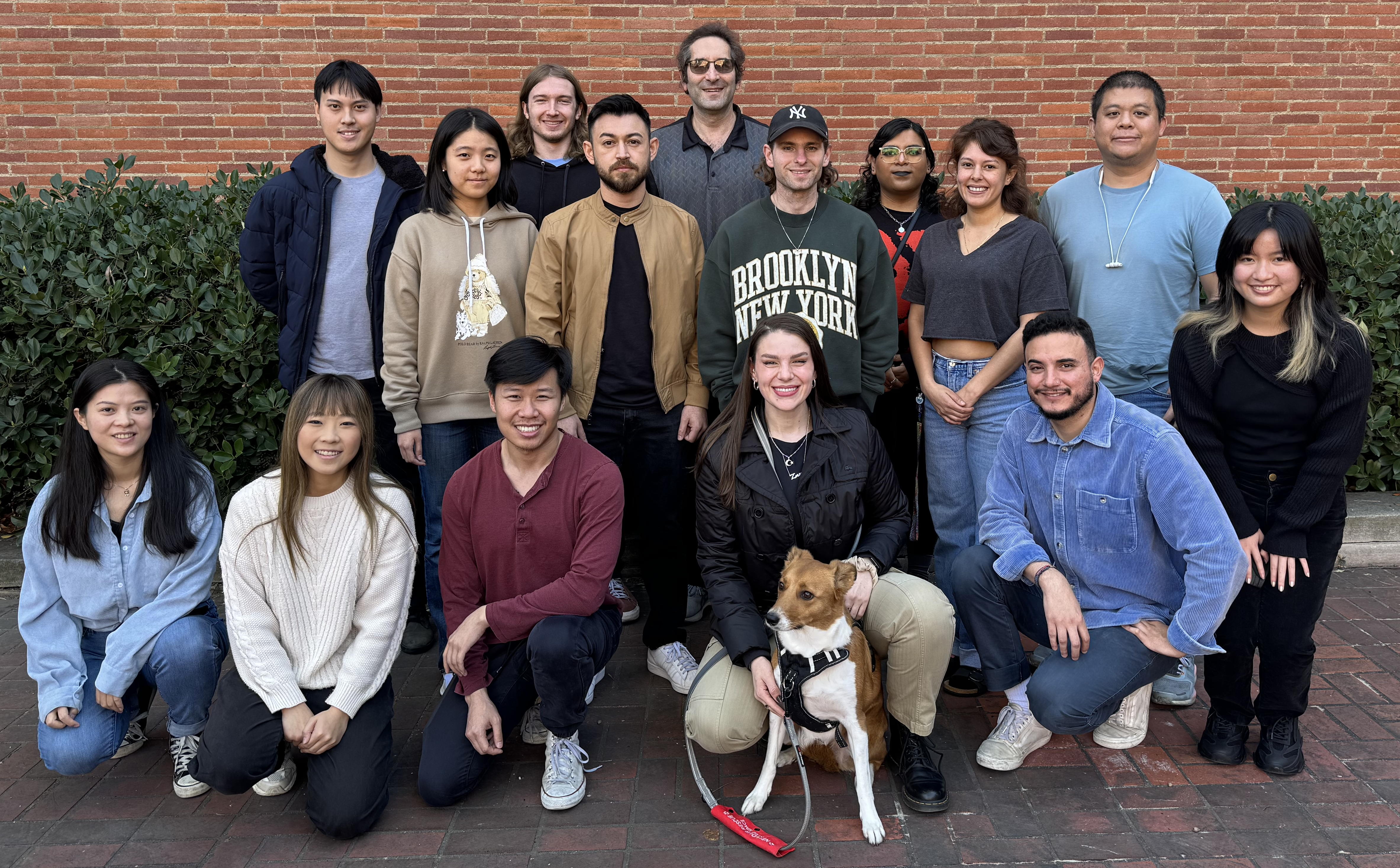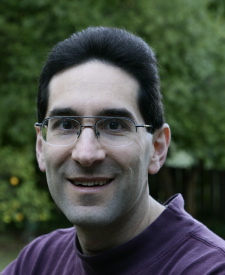|
|||||||||||||
Our research is directed at building a molecular-level understanding of chemical reactivity in complex environments by studying the dynamics of condensed phase chemical reactions using both experimental and theoretical techniques: femtosecond lasers and molecular dynamics computer simulations. Our research efforts fall into two principle areas: studies of how solvent molecules control the choice of products or the rate of solution-phase chemical reactions, and investigations into the ultrafast photophysics and electronic structure of semiconducting polymers and their behavior when doped and when used in optoelectronic devices. We also have worked in the past at fabricating three-dimensional microstructures using multiphoton lithography. Our first main area of research centers around solvent effects on chemical reactivity. As a chemical reaction takes place in solution, chemical bonds are broken and formed and electrical charge is redistributed between reactants and products. The solvent environment responds (via molecular reorientation or translation) to these changes in charge distribution and in size and shape of the reacting species on a variety of time scales extending from femtoseconds to longer than microseconds. In our group, we use femtosecond pump-probe spectroscopies to experimentally monitor the course of solution phase chemical reactions in real time. With femtosecond time resolution, we are able to "watch" the motions of solvent molecules responding to chemical changes of reacting solutes, monitor the flow of energy between reacting species and the solvent, and identify the motion of electrons during charge transfer reactions. These experiments are accompanied by computer simulations, ranging from simple solutions of Newton's classical equations of motion to sophisticated algorithms allowing for quantum dynamics in the absence of the Born-Oppenheimer approximation. Our group develops new techniques for deriving the pseudopotentials needed in mixed quantum/classical simulations, solving the Schrödinger equation for electrons that reside largely between molecules, and calculating free energies of quantum mechanical objects in condensed phases. Our simulations provide molecular detail that is unavailable from experiment; on the computer, for example, we can easily separate the roles of solvent rotational and translational motions in solvating a chemical species or in providing the energy needed to promote a charge transfer reaction. Projects range from studies of model systems such as solvated electrons and diatomic molecules to investigations of large organic molecules with complex photochemistry. Simulations are done in close connection to the femtosecond experiments, so that experimental results drive new simulations and vice-versa, providing students in the group with an opportunity to do both experimental and theoretical work. Our second
main area of research is focused on the electronic
structure and device physics of conjugated polymers.
Conjugated polymers are remarkable materials that have
the electrical properties of semiconductors but the
mechanical properties and processing advantages of
plastics. This gives these materials enormous
commercial potential for use in light-emitting diodes,
displays, thermoelectrics and photovoltaics that have
large areas and are flexible. Upon photoexcitation,
the electrons and holes created in semiconducting
polymers interact with their environment, leading to
relaxation processes on multiple time scales; many of
the important dynamical issues are qualitatively
similar to the solution-phase reactions discussed
above. For thermoelectrics, the polymers are
doped with strong oxidizing or reducing agents; the
redox potential of the dopant and the way its
counterion interacts with the carriers on the polymer
backbone are the main factors determining carrier
mobility. Thus, much of our work focuses on
understanding the relationship between the structure
and function of polymer-based active layers so that
the morphology can be controlled and optimized for
different applications. We work to achieve this
goal using information from femtosecond and
steady-state spectroscopies,simulations and quantum
chemistry calculations, and the device physics of
working polymer thermoelectrics. Projects include:
spectroscopic studies of the electronic structure of
conjugated polymer films and doped films; manipulating
the interactions between polymer chains and dopants
using using sequential processing and/or self-assembly
techniques; studying the physics of carriers in
working polymer-based devices using a variety of
techniques including the AC Hall effect; and studying
the effects of different types of disorder both
experimentally and theoretically. This work provides
students the opportunity to learn fundamental
photophysics, polymer processing techniques, and
semiconductor device construction.
If you have problems viewing any of these papers (all in PDF format), try "Save Target As" instead of viewing directly through your browser.
K. J. Mei, W. R. Borrelli, A. Vong and B. J. Schwartz, "Using
Machine Learning to Understand the Causes of Quantum
Decoherence in Solution-Phase Bond Breaking," J.
Phys. Chem. Lett. 15, 903-11 (2024); DOI:
10.1021/acs.jpclett.3c03474. S. J.
Park and B. J. Schwartz, "How Ions
Break Local Symmetry: Simulations of Polarized
Transient Hole-Burning for Different Models of the
Hydrated Electron in Contact Pairs with Na+,"
J. Phys. Chem. Lett. 14, 3014-22 (2023);
DOI: 10.1021/acs.jpclett.3c00220. S. J.
Park, W. A. Narvaez and B. J. Schwartz, "Ab
Initio Studies of Hydrated Electron:Cation Contact
Pairs: Hydrated Electrons Simulated by Density
Functional Theory are too Kosmotropic," J.
Phys. Chem. Lett. 14, 559-66 (2023); DOI:
10.1021/acs.jpclett.2c03705. M.
G. Voss, J. R. Challa, D. T. Scholes, P. Y. Yee,
E. C. Wu, X. Liu, S. J. Park, O. Leon Ruiz, S.
Subramaniyan, M. Chen, S. A. Jenekhe, X. Wang, S.
H. Tolbert and B. J. Schwartz, "Driving
Force and Optical Signatures of Bipolaron
Formation in Chemically-Doped Conjugated
Polymers," Adv. Mater. 2000228,
1-7 (2020); DOI: 10.1002/adma.202000228. T. J. Aubry, J. C. Axtell, V. M.
Basile, K. J. Winchell, J. R. Lindemuth, T. M.
Porter, J-Y. Liu, A. N. Alexandrova, C. P. Kubiak,
S. H. Tolbert, A. M. Spokoyny and B. J. Schwartz, "Dodecaborane-Based
Dopants Designed to Shield Anion Electrostatics Lead
to Increased Carrier Mobility in a Doped Conjugated
Polymer," Adv. Mater. 1805647, 1-8
(2019); DOI: 10.1002/adma.201805647. Complete Publication List
(including links to full text of papers) last updated
8/2/24. If you have problems viewing any of these papers (all in PDF format), try "Save Target As" instead of viewing directly through your browser.
Department
of
Chemistry & Biochemistry
Student Office/Lab: (310) 206-6418
Current members of the Schwartz Group  The Schwartz group in Jan 2024 Front row,
from left to right: Xiaoyan Liu (postdoc), Kara
Lo (grad student), Back row,
left to right: Quynh Duong (grad student),
Hannah Liu (undergrad student), (for the Bitmoji version of the Schwartz
group, click here). Evolution
of
the Schwartz Group Please send comments on this page, notice of missing links, etc. to schwartz at chem.ucla.edu
|

